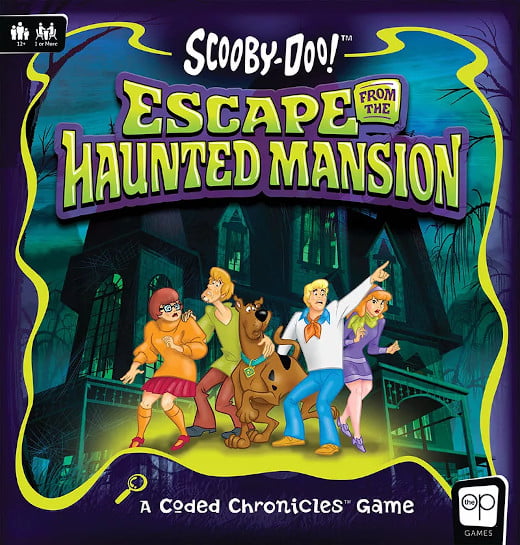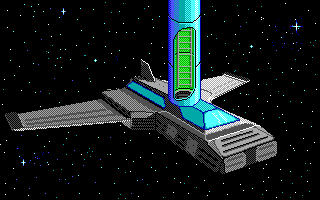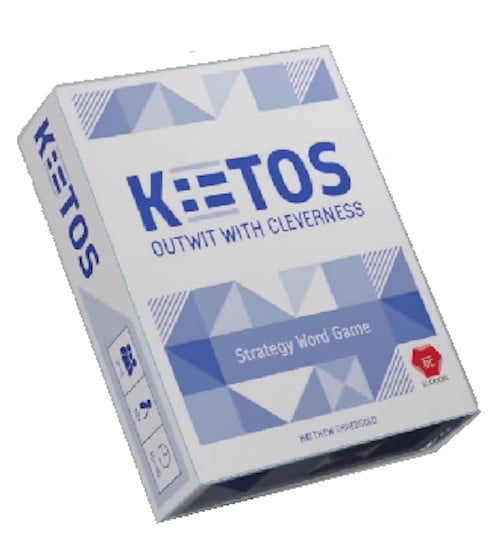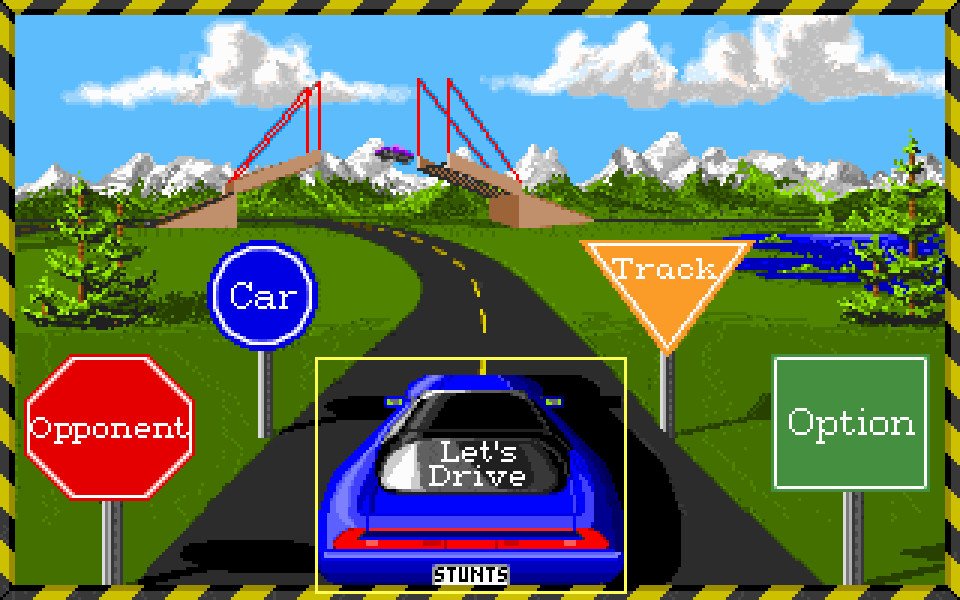Game Pile: Klotski
If you’re the right age, you might remember this old Windows 3.1 game, Klotski. Hypothetically, it’s based on an ancient genre of sliding block puzzles that may or may not date back to ‘Ancient China,’ which is typically a sign that the people writing the textbook have given up. I don’t know it by its supposedly more original name and turns out that a lot of the resources referring to it as Huorong Dao are in languages I don’t read.
It’s a block-sliding puzzle game that looks impossible at first, but you get it presented to you as if you can get the big central block out. It’s funny how, as a kid, I genuinely wasn’t sure if it was possible to solve. Think about that, there was a time when I thought it was very reasonable that someone would distribute a software package that literally could not do anything but let you play around and get frustrated with it a lot. I figured, because I couldn’t solve it, that the game was a program made to make people like me feel stupid and waste our time.
Don’t wanna talk to you about the mysterious origin of this game, though, want to talk to you about a table.
Continue Reading →Game Pile: Eyes On The Prize
Hey, Fox and I played a TTRPG about making and maintaining a fake marriage!
Game Pile: We Should Talk
We Should Talk is a 2020 conversational visual novel produced by Insatiable Cycle and released by Whitehorn games. The scenario is small, and simple, and intimate: You’re at a bar, your partner is at home, and you chat with some people face-to-face, and your partner via your phone, and… that’s it. You chat, then the story culminates in a decision point that starts with someone saying we should talk.
The game’s available on a bunch of platforms, particularly Steam and Itch, and if you’re in the right mood, right now, for a game that’s interesting, more than a game that tells a necessarily compelling story, or has specifically challenging gameplay, you should definitely consider checking it out. It’s been in a few bundles, you might even have it!
Now, if you want me to talk more about the game and how I feel about it, well, that’s spoiler territory, so let’s look at it after the fold.

Game Pile: The Romances of Baldur’s Gate 2
Game Pile: Love Letter
It used to be that Love Letter was a great start to a modern niche board game collection. Now, it is possible for Love Letter to be a modern niche board game collection. At this point, the boardgamegeek site lists over thirty four variant reimplementations, alternate boxes or art styles or licensed versions of Love Letter, with varying sizes and scales. So steep was this proliferation I was seriously tempted to do a gag of reviewing a different copy of Love Letter every month for a year only to realise I wouldn’t get through more than half of them doing that.

For the unfamiliar, Love Letter is a tiny card game — usually something like eighteen cards — originally developed by Seiji Kanai, and as burly as it is having thirty iterations of a game in your developer credits, Love Letter represents about half of Kanai’s work. And you might think in the same vein as heavily franchised movies or long-running soap opera TV shows, is there being a lot of something a signal that it’s potentially a bit bad, right?
But no.
I think Love Letter is great.
Continue Reading →Game Pile: 2023 Channel Trailer
Gotta keep this thing updated, and this is a great time to do it, what with the new pivot to different social media platforms!
Game Pile: Crystal Caves
I will wring anticapitalist blood out of this fucking stone if I have to.

Game Pile: Speedrunning The Swindle
Script outline and thumbnail below the fold!
Continue Reading →Game Pile: Keep The Heroes Out
When I talk about board games I know I’m biased towards talking about small, highly portable experiences that can often be introduced and played interestingly the very first time without any need to reference a rulebook. I’m not prone to having anything to talk about when it comes to campaign games, because those are often long-form, and also, we’re kind of still dealing with minimising your potential social interaction surfaces, you know the kind of deal, and I’ve even written about how strangely impossible it can be to recommend the consideration of games which are otherwise inaccessible to buy.

Keep The Heroes Out is a table-sprawling high-material campaign game by Luis Brueh, about playing the monsters in a classic fantasy dungeon fighting adventurers, it’s entirely based around scenarios you play through from a campaign sourcebook, and as far as I know, it was only available on kickstarter.
Hang on a sec.
Check check check…
Yeah okay, it’s not a conventionally available in stores, at least, not as far as I can see. You can find some copies on Ebay, and Brueh games seem to be distributing other games through other companies, so maybe this will become a commercial purchase at some point. I don’t know. No idea.
Gunna talk about it anyway!
Continue Reading →Game Pile: Three Top 5s Of 2022
Video article goes heeeeereee:
Thumbnail after the fold:
Continue Reading →Game Pile: One Page Rules
One Page Rules is a family of tabletop material games with the design principle that the core rules for playing the game takes one page (back and front), and each individual faction you want to play can have all its game mechanical information conveyed again, on one page (back and front).

Once upon a time, this kind of thing would be considered an indie game, an extremely streamlined, microgame style arrangement. But the thing that sets One Page Rule aparts is that it has one of the most remarkable potential scopes of any game of its genre I’ve ever seen.
Continue Reading →Game Pile: Eco Quest & The Cringe of Care
This is a video update of an article I wrote a few years ago!
Game Pile: Jelle’s Marble Runs
Is a spectator playing a game?
Well, they’re doing something, right? If the audience, if the crowd, wasn’t a factor in a sports presentation then there wouldn’t be a meaningful idea of ‘home team’ advantage. We know that spectators in a sport influence the game that’s being played, after all — if nothing else, there are a lot of times in Baseball’s history in particular where a game was concluded, thanks to the actions of the spectators.
Now, hang on, you might argue that that’s not playing the game, and yeah, maybe it’s not. It’s concluding the game, with a different set of priorities. But the knowledge that fans can do that kind of thing, concerns that the reactions of the fans could curtail the game certainly play into the game’s players’ functions. They are an influence on the playing of the game, so we can definitely not say that they are separate from it.
But let’s say that that’s a material concern; that the game is agnostic of the spectator behaviour, and that the game is only defined by the rules that they experience. This is a great big discussion, something you can delve into at length through The Philosophy Of Sport, but that mighty tome is built on the work of Bernard Suits, the author of the Grasshopper, Life Games And Utopia. In that work, Suits forwards a definition of games that I think has achieved widespread academic adoption, which is that a game is The consensual overcoming of unnecessary obstacles.
Now I’ve written about this in the past, when I ruminated on the question of whether Carlos Santana truly ‘played’ SIlent Hill with his controller of Rob Thomas. But that’s about streamers and an engaged audience; an audience, like the spectators, who are present to the player, who are in a way connected to the scenario. They influence the game by dint of engaging with the player.
What about an audience who are completely disconnected? What if we took the audience completely out of the sport, let’s put them in a remote location, where they can’t say or do anything to the players, like the esports community of South Korea’s Starcraft channels. For lower-tier matches, outside of code A (at least ten years ago when I was paying a lot more attention), players weren’t getting a live audience, but their games were being broadcasted to satisfy a bottomless demand… and we know in that case, that nerves, choking, all are factors that the audience’s existence can impose on the players.
Okay, so what if we remove the ability of the audience to influence the players. What if the players are somehow, emotionally, unaffectable by the attention of an audience? What if they were cold, efficient, and entirely automated in their play experience in a way that could be equalised and fair? And in order to make sure they’re not too complex, let’s make these game players as simple as possible such that they can’t fail or break or be otherwise impacted, meaning the game can operate in the purest possible way, without any psychological influence of the audience.
Are those spectators playing a game?
Yes.
In that simplest possible definition, there is a goal, and the spectator is trying to achieve the goal, with a consensually-chosen unnecessary obstacle: Specifically, the goal is to get their chosen simplified actor into a victory position, with a control mechanism that is completely deprived of all functional agency.
The spectator wants a player to win, they want to succeed, but the only means they have to influence the game are by cheering and by wanting. They negotiate, they pray, they plan, they strategise, they try to find a way to see their chosen player win, or get better results, or wind up where they want them to be, all through no means at all, through the least effective means possible.
Oh yeah, and uh, Jelle’s marble runs is a super sick youtube channel with lots of long-form, child-safe content that is watching marbles being run through races, with just enough fictional structure to treat these marbles like teams and players, that you can get attached to a particular marble, go Goose. If you want something engaging and interesting, it’s super fun to watch. Hell just writing up this article took longer because I was too busy watching the videos of the marble runs.
Game Pile: Rod, Reel, & Fist
The oxford comma is part of the title, don’t bully me.
If you want the thumbnail, below the fold:
Continue Reading →Game Pile: Straight Outta Tucson
Desert Bus was last week! It’s a cool event that raises money for the Childs Play charity, by playing the game Desert Bus. The more you donate to the event, the longer the event runs, and that means they have to play the game longer and if you weren’t aware, Desert Bus is a shockingly boring game.
What this means is that the whole streaming event is someone playing a dreadfully boring game and doing anything they can to be less bored – with their friends in the room. It’s a festival of events of busking, comedy performances, dramatic readings, a few D&D games, quiz games and also kinda a long-reaching slow-rolling combination of a con and a podcast. And mixed in amongst that there’s other events, including a game jam!
And I submitted a game to it this year!
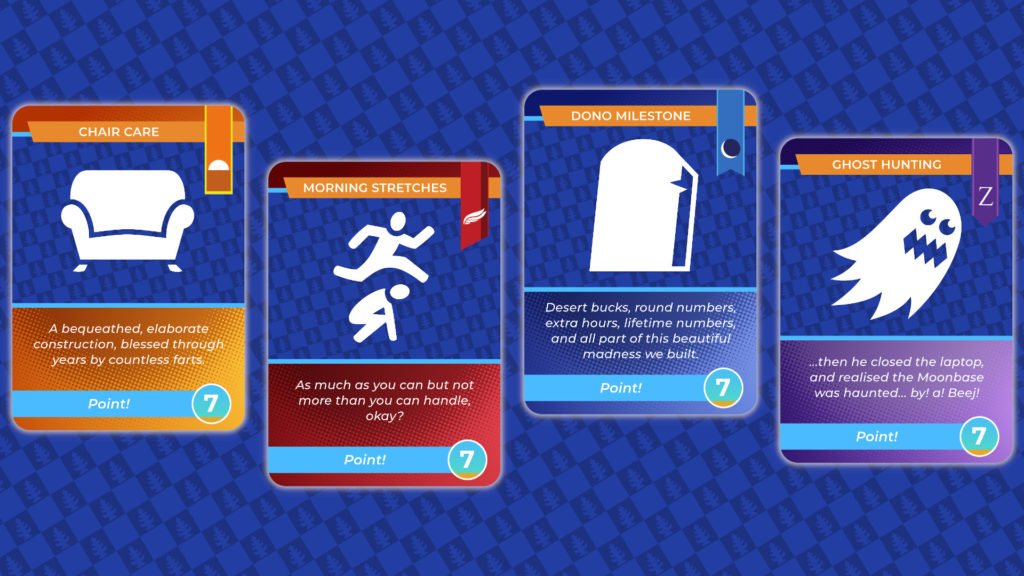
The game is called Straight Outta Tucson, and it’s a simple little affair; it’s completely free to download and play, and we may be seeing about putting it up on some print-on-demand services as a cost-and-shipping-only option if you want a professionally made copy.
And I wanted to talk a little bit about what was involved in making it.
Continue Reading →Game Pile: The Disney Animated Canonball Tier List
Man this was a worrrrk. For this No-Effort-November game video, I thought I’d do a tier list and talk a bit about how playing with ideas like this is, itself, a game. And anyway, turns out it was a huge pile of effort to do it the way I did, with a video that wound up with over 120 levels of media and 90 minutes of audio…
But hey, here it is! Enjoy!
Game Pile: City of Heroes Homecoming, i27 — Page 5
I was not expecting this! I was not expecting to get two Homecoming updates this year, which may sound a little sarcastic but please remember Homecoming is a free game maintained by fans for the love of it, so the updates (known as ‘Pages’) are things I try not to expect. I’m a super-invested player, with a huge cast of characters all at the level cap, so I try not to get involved in beta discussions of how the game ‘should’ be — I know that my experience is extremely atypical to most players. That means that new pages arrive in my life like a delightful little fairy sprinkling dust.
This page was definitely lots of little stuff but not lots of #content, so I’m going to run through what it is and what it means, to me, and why you might care about it.
Continue Reading →Game Pile: Bart Vs The Space Mutants (Video!)
I thought it’d be a good time to go back to some older stuff I made that talks about an interesting idea, and this time it was the way that Bart Vs The Space Mutants is a game constructed entirely out of how the ads feel. So I found my old article and made a video out of it!
And now, some space and the thumbnail after the fold:
Continue Reading →Game Pile: Suspended
Game Pile: Star-Spawned
If you want to check out Star-Spawned, here’s the original Tumblr post, and here’s a PDF for those where that link doesn’t work.
Below the fold we have our outline and our thumbnail!
Continue Reading →Game Pile: Scooby-Doo! Escape from the Haunted Mansion
Scooby Doo was never my favourite franchise growing up. I always thought it looked hokey, all the monsters were disappointing because they didn’t tend to make sense and were always just dudes in suits, and there were always so many episodes of it so that any time you were watching cartoons it’s possible a slot that something interesting could be in would be surprisingly filled by Some More Scooby Doo. As I grew up, there was always more Scooby Doo stuff, almost as if it was just a franchise running in the spot while the timeline of the background spooled in a circle behind it.
I have never perceived Scooby Doo branding as a sign of quality.
Let me then explain to you the surprise and delight that came out of playing this game and finding out that it is a genuinely fascinating, clever board game experience that I thoroughly enjoyed.
Continue Reading →Game Pile: The Excavation of Hob’s Barrow
If you want the super-short summary, it’s a point-and-click adventure by Cloak and Dagger games and published by Wadjet Eye, and in that specific genre of current narrative adventures using a point-and-click, Beneath A Steel Sky style, it’s really great. It’s a folk horror game, it does flashbacks and really cryptic puzzles, could be a little more convenient to avoid some of the pitfalls.
The video is, largely, about what we call horror.
Thumbnail below the fold.
Continue Reading →Game Pile: Son of Xenon
There are, officially, six Space Quest videogames, released in order from 1986 to 1995. They follow the adventures of Roger Wilco, a hapless janitor whose adventures started on the Arcada, a science vessel transporting a super-science doohickey that could be turned into a weapon, where everyone was killed but Roger, who avoided certain doom because he was sleeping in the closet. Each game ramped up the stakes and adjusted the setting a little, with Roger going on a series of adventures that were mostly about trying to survive extremely hostile situations in which he’d been flung by the machinations of someone else, or in some cases, great coincidence.
Mostly the Space Quest games were defined by a particular sense of humour, which in some cases doesn’t age great (of the six games, fully three of them pass before there’s a single woman character who says anything), and a gameplay system that’s much more about being a very ordinary person trying to construct solutions to things because of your limited expertise.
But the technology of full-time professionals in 1985 has long since passed into the skillset of the hobbyist, and so the Space Quest franchise, which has been dormant so long the company responsible for it has been dead for years, is mostly continued by fan games.
Like this one, Son of Xenon.
Son of Xenon is a 16-colour, 320-200 pixel resolution Space Quest fan game that is, ostensibly, about Roger Wilco before he became the janitor of the Arcada, before the sun of Xenon was dying, before the Star Generator was ever made. If you want to check out Son Of Xenon before I go on about it, here’s a link. It’s pretty good. I got stuck at a few points, but it didn’t feel nearly as unfair as the genre normally is, and you’ll probably get through it in a few hours on your own.
No spoilers after the fold, but rather, a consideration of Roger Wilco, and his place in gaming, and why we get fangames like Son of Xenon.
Continue Reading →Game Pile: Remembering Cataclysm
Script and thumbnail below the fold!
Game Pile: Competitive Smash Bros Melee
Super Smash Bros Melee Competitive doesn’t exist.
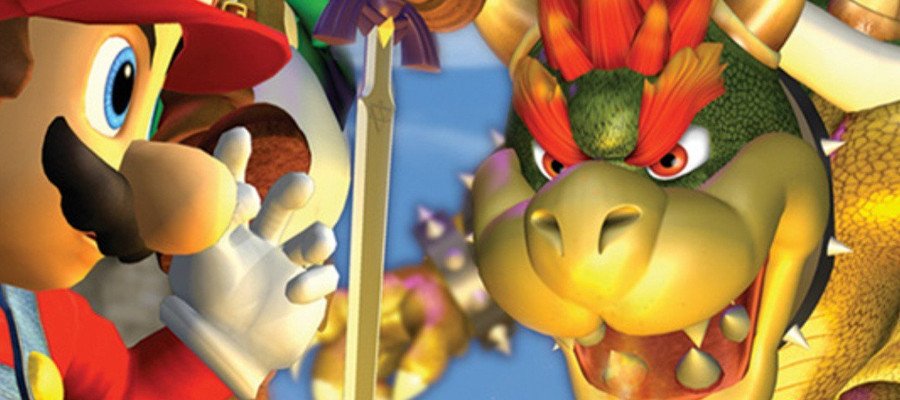
But then again, neither does baseball.
Continue Reading →Game Pile: Exalted, The Infernals, and Dreadful Favourites
Back in 2019 I wrote a pair of articles about Exalted, and The Infernals and the challenges of grappling with a book I don’t recommend but still has in it stuff I like in an interesting, vibrant, wild setting. Apparently 3e Exalted is now ending and a new game is being made in its wake, so what better time than to complain about books that are sixteen years old?
If you wanna see the thumbnail, here it is:
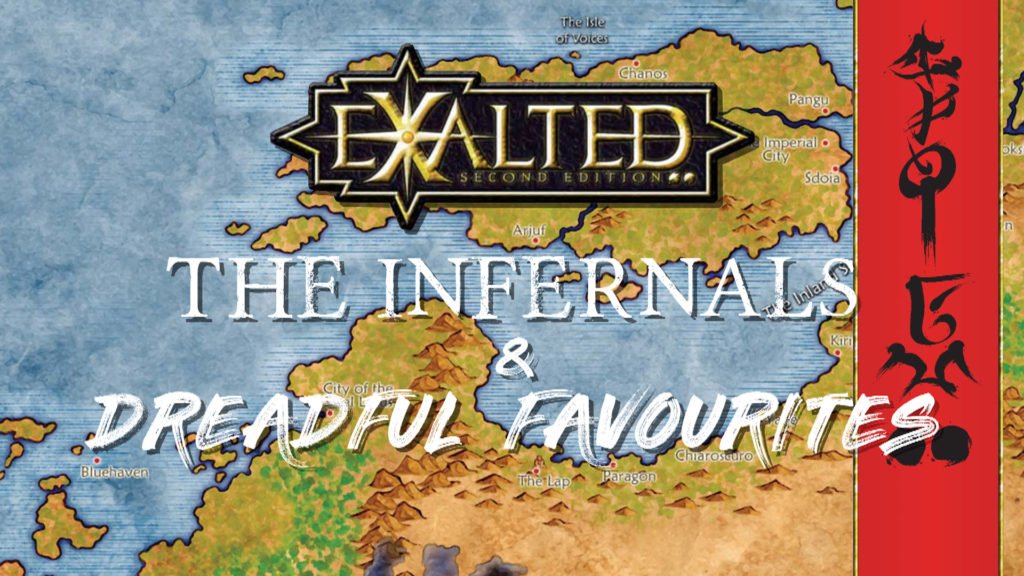
Game Pile: City of Heroes Homecoming, Page 4
Oh snap, what’s that? That MMO everyone is always talking about with the cool looking characters, that’s free to play up to level 50 and beyond, has gotten a recent update?
That’s right, mother-havers and non-mother-havers, it’s another City of Heroes Homecoming Page, a content update for the sweatiest of weirdoes!
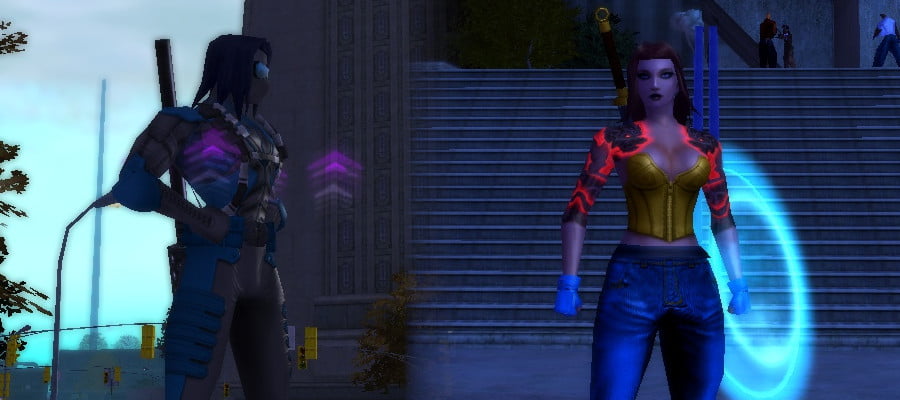
Game Pile: Skatebird
I gotta tell you, this was hard, because the game is hard and I’m not good at it, but it’s also really good and I don’t know how to tell you that because I don’t know how long the game stays good or if I’m even misreading it and man, you know, games are hard.
And here’s the thumbnail if you wanted to see it:
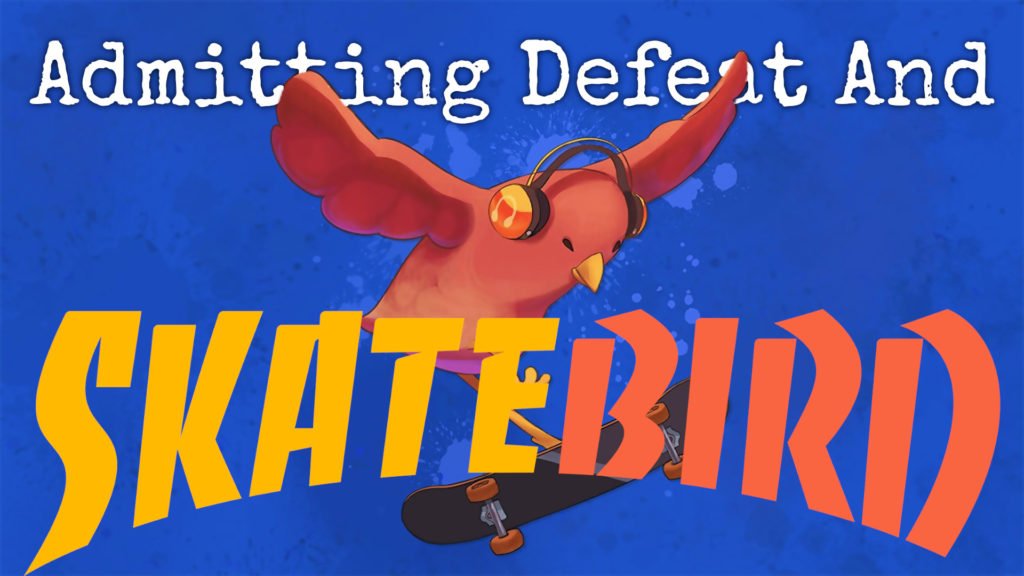
Game Pile: Kiitos
Kiitos’ rules are so simple explaining them doesn’t really give you a feel for the game as it plays. The simplest explainer is that it’s a trick taker version of scrabble. You have a hand full of cards with some letters on them. You put down a card with a letter on it, then you say a word that starts with that letter, and then pass it to the next player. If they have the next letter in their hand, they have to play it into the word. In so doing, everyone builds on this word until it’s done, and when that happens, the person who set the word originally says ‘kiitos,’ meaning ‘thank you,’ and then takes the cards and they won that round.
If you can’t continue the existing word, the default assumption is you then take the existing letters in front of you, and put them in front of you face down as your negative points – a ‘great job, loser’ pile of cards that indicate you’ve just hecked up in the worst kind of way, great job. Is there some way to escape this fate, though?
Why, yes — if you can’t continue the word with the cards in your hand, you might be able to add a letter and say a new word. And now suddenly someone may have started with the word BURP and you’ve elbow-shoved the table into BUDGET and what’s more, now they’re bound by the same rules – they have to continue the word if they can. They can’t just shove the word back when they get the chance because the word’s been deformed by definition.
And… that’s it! You play rounds until you stop. The game is incredibly simple, and yet brain-expandingly difficult when you understand the rules system.

Game Pile: Superstition
I checked out the solo journaling card game Superstition this month, and then I put those thoughts in a video while I talked about the idea of semiotics and audience.
Thumbnail after the fold!
Continue Reading →Game Pile: Stunts
This game is complicated to discuss. Not because the game is complex or there’s some problem with the provenance or a complicated word in the title, but rather, because most people I know who knew the game knew it only as stunts.exe, but depending on what part of the world your copy came from, it could have been known as 4DS, Stunt Car Racer, Stunt Driver, or Stunts.
We were, however, all well aware that this game was great.
For reasons that are tricky to explain.
Continue Reading →

